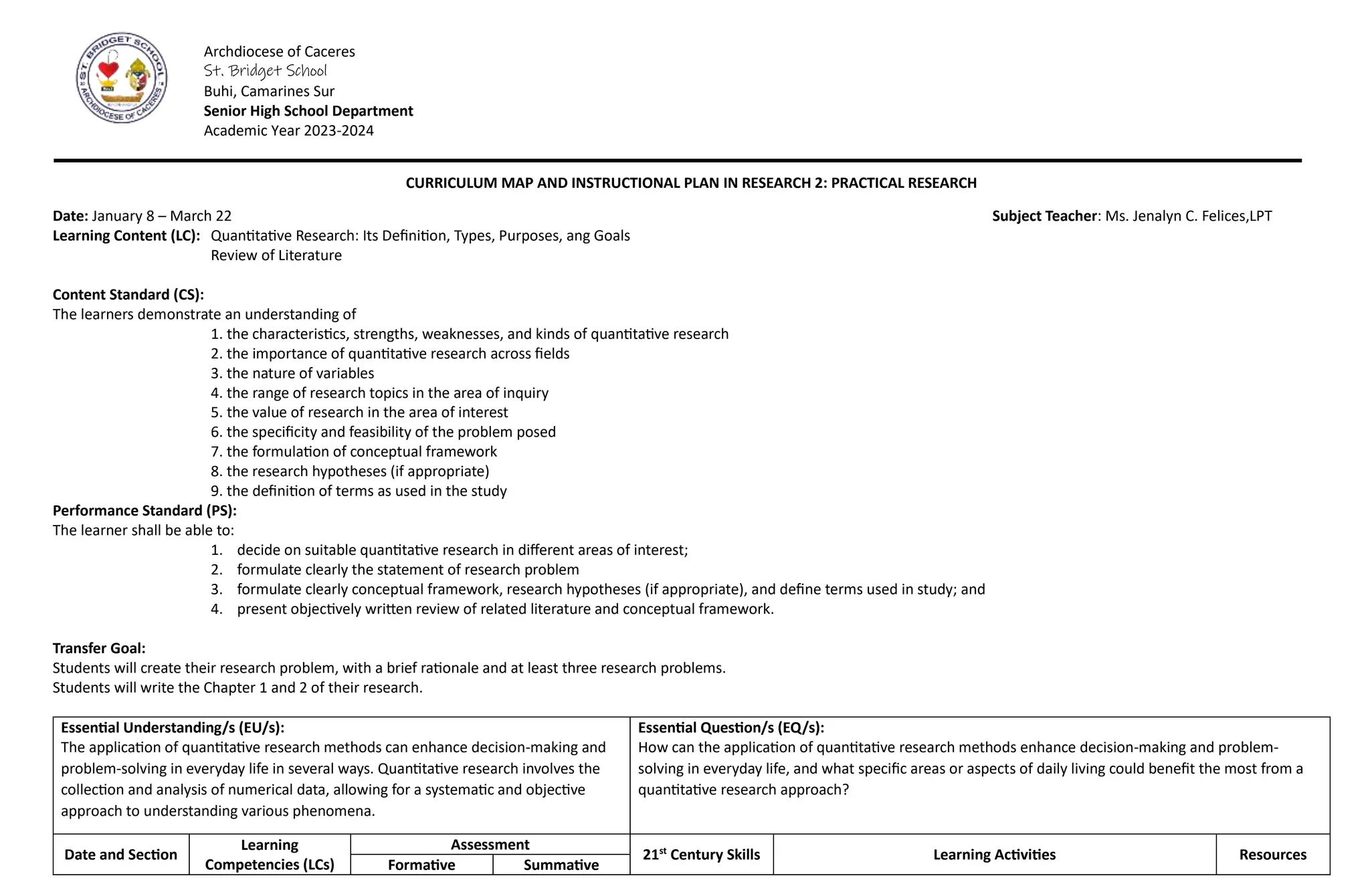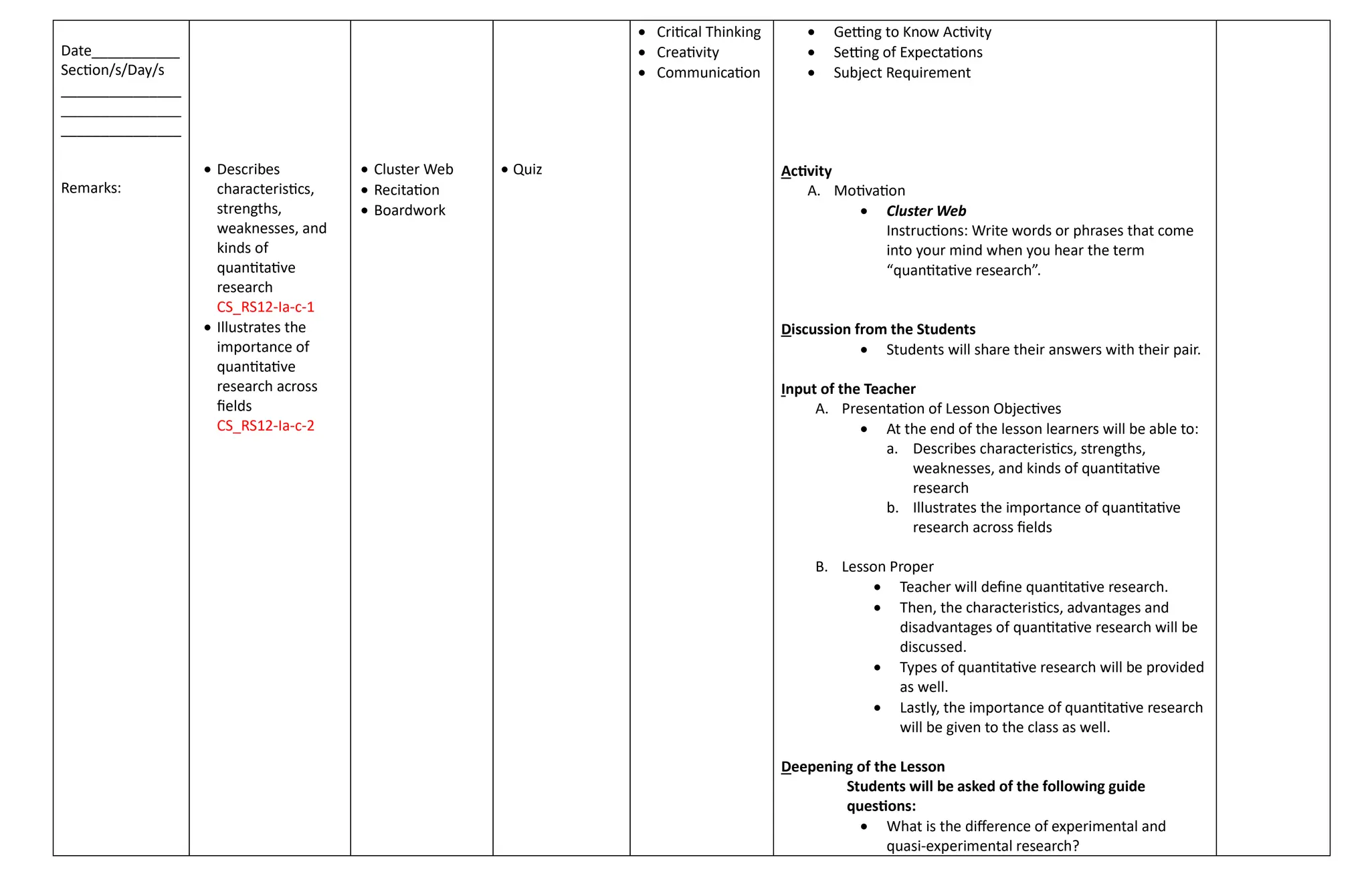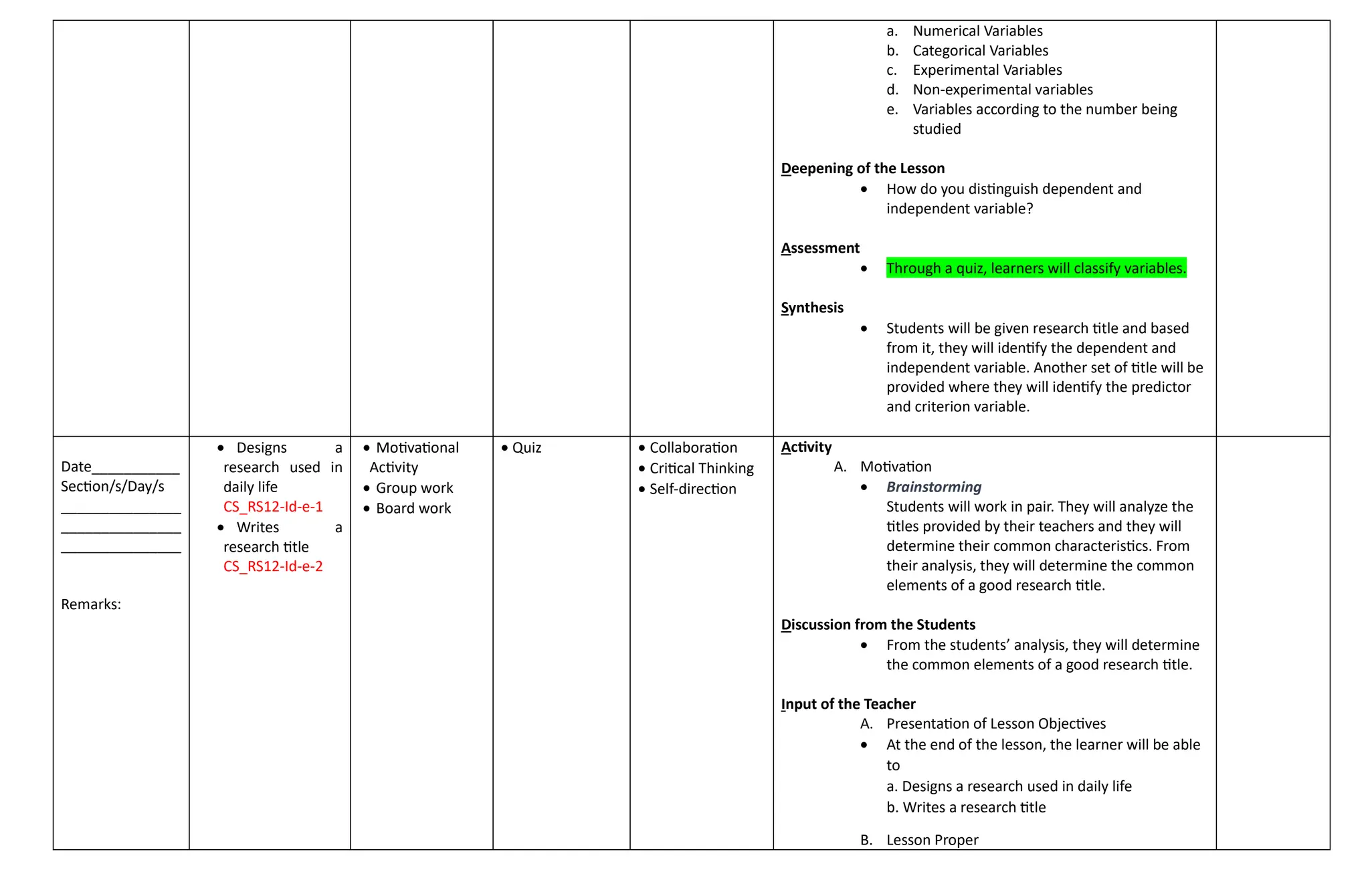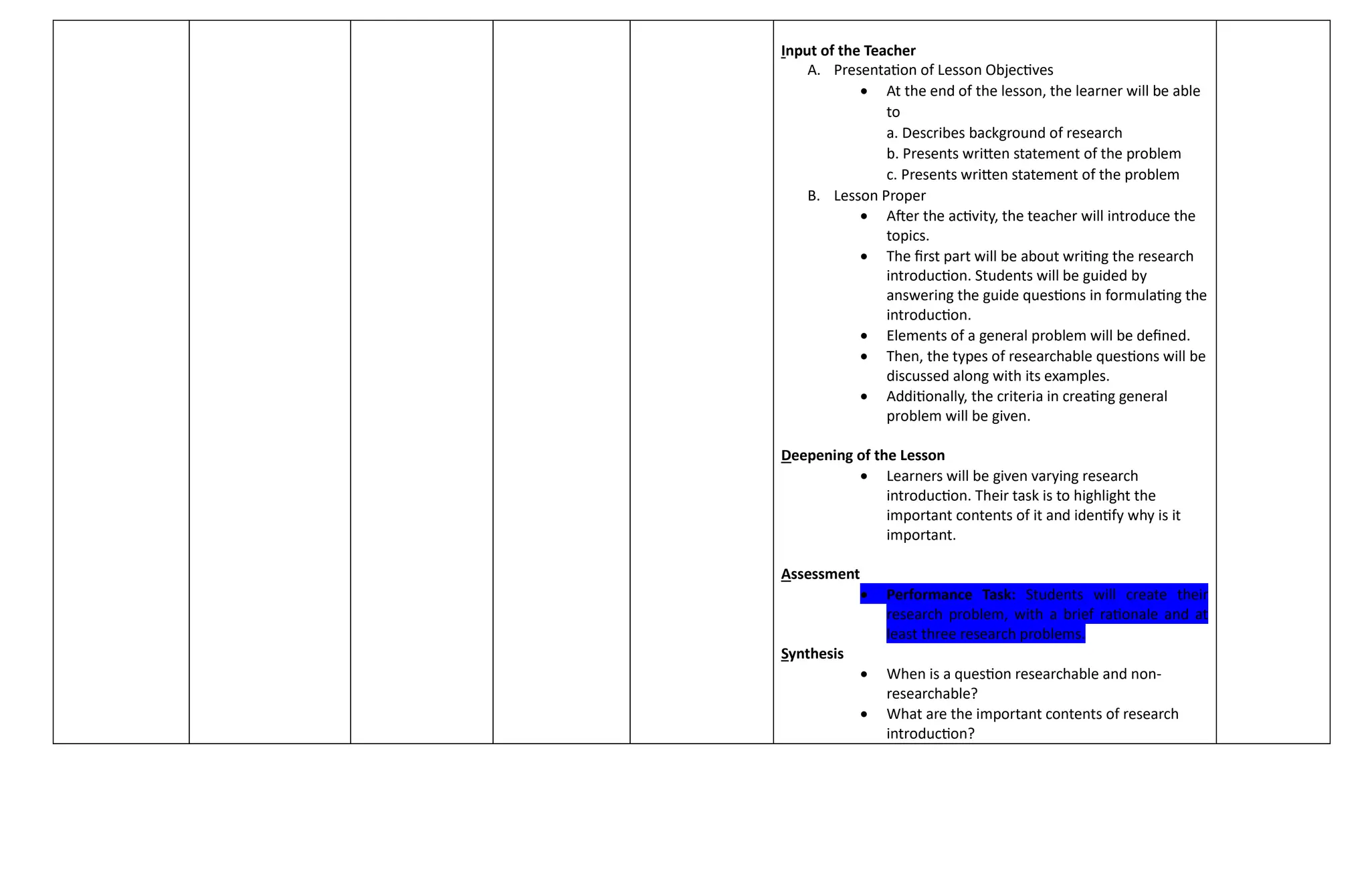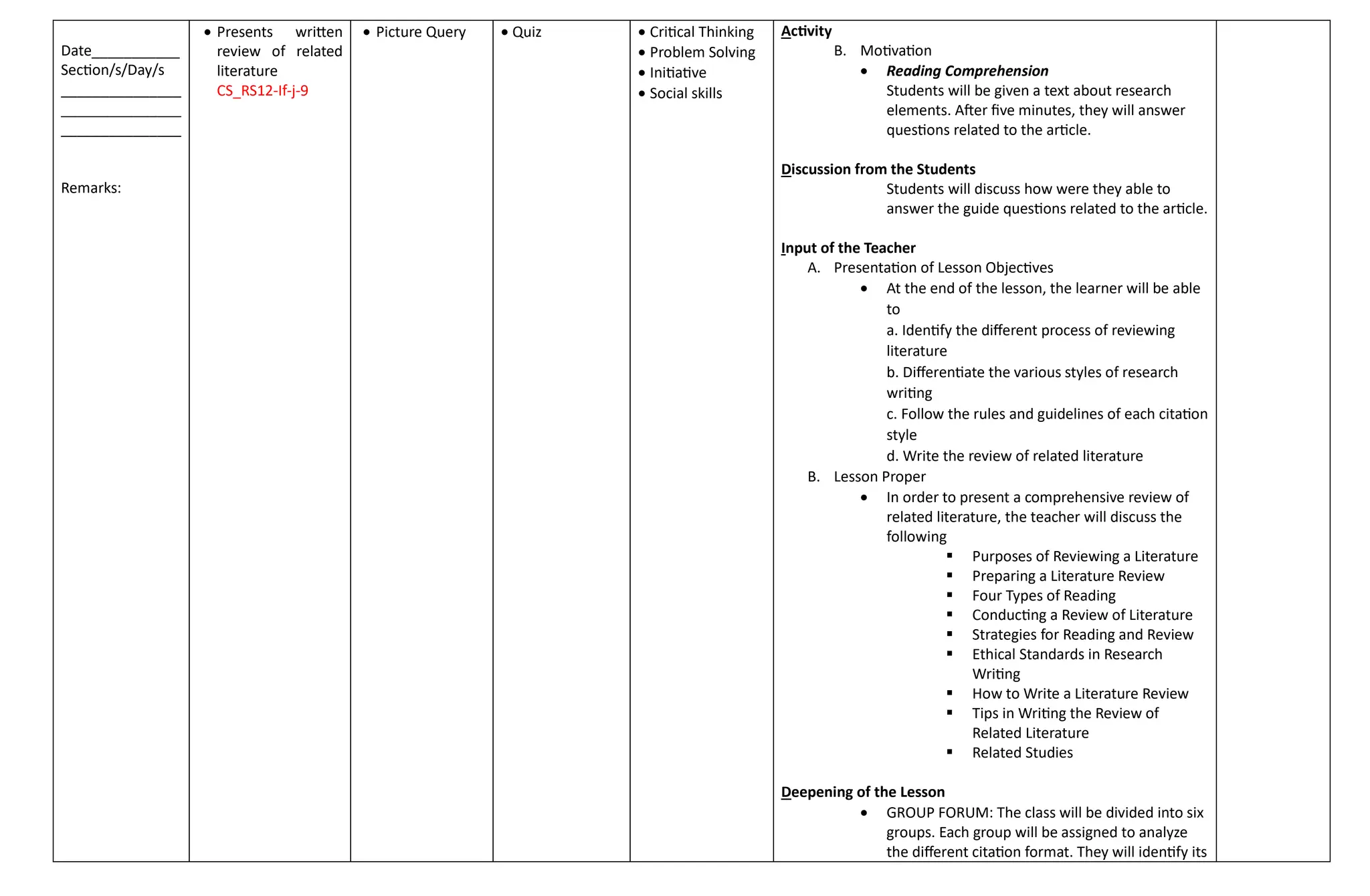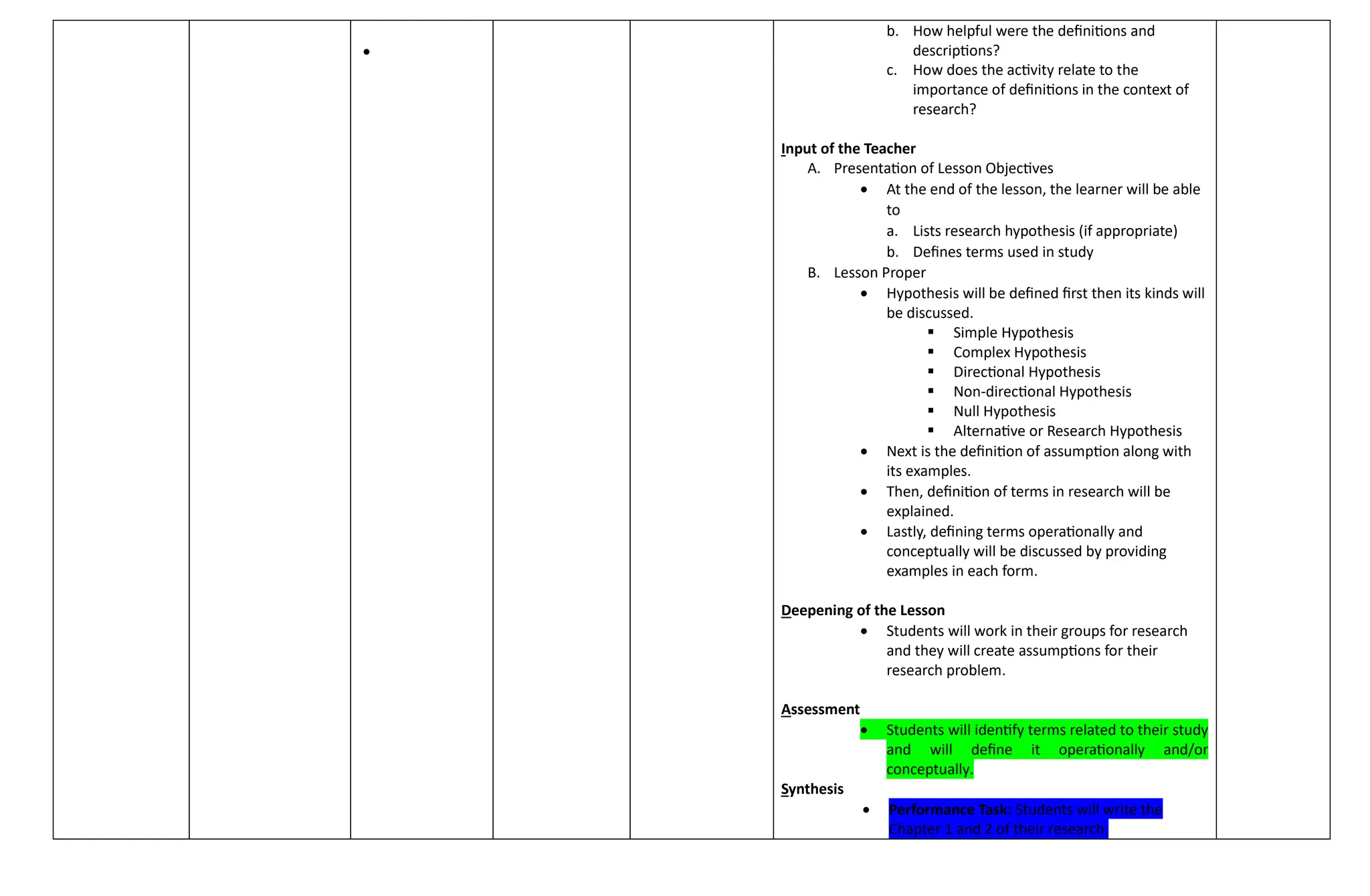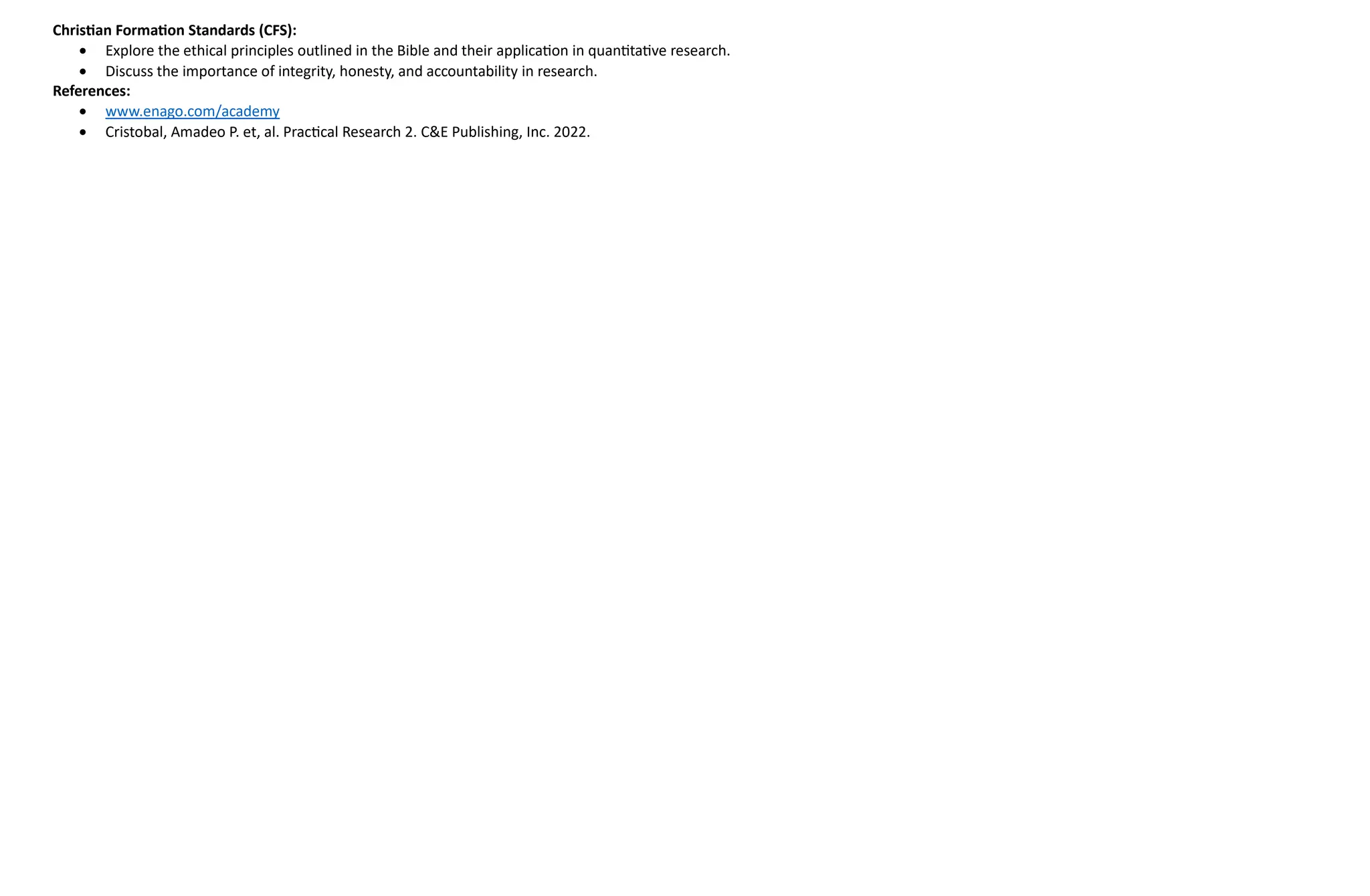This curriculum map outlines a research methods course covering quantitative research. The learning content includes quantitative research definitions, types, purposes and goals. Students will learn to understand characteristics of quantitative research, importance across fields, variables, and research topics. Performance standards have students deciding on suitable quantitative research, formulating clear research problems, conceptual frameworks and defining study terms. Learning activities include group work, quizzes and research projects. Students will create their research problem and write the first two chapters of their research paper. Christian formation standards explore ethics in research and importance of integrity, honesty and accountability.
